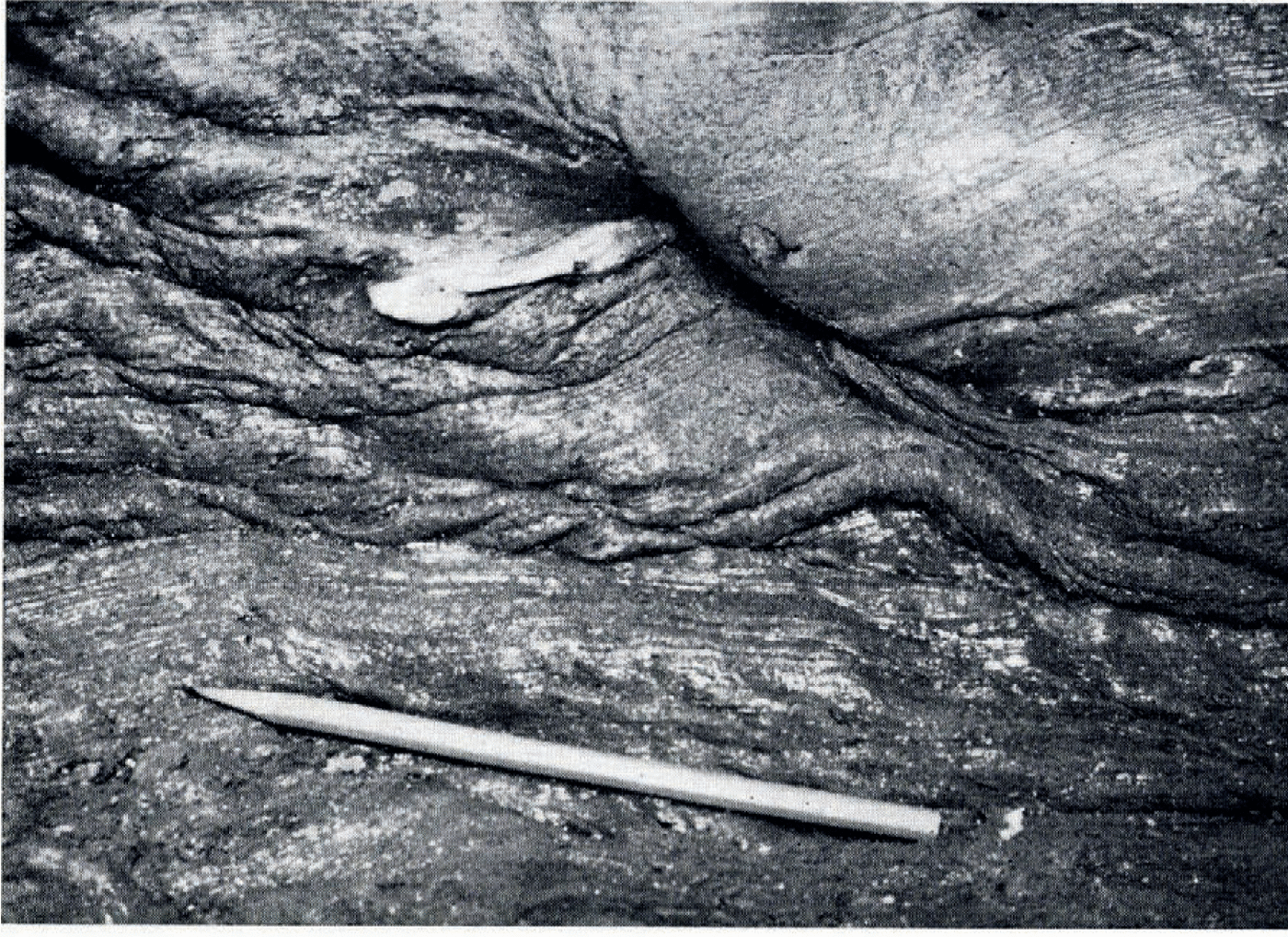The Editor,
Journal of Glaciology
Sir,
In a recent issue of the Journal, two papers dealt with subglacial observations at Glacier d’Argentière (Reference Vivian and BocquetVivian and Boequet, 1973; Reference Souchez, Souchez, Lorrain and LemmensSouchez and others, 1973). Many of the ice features there were similar to those seen elsewhere, including a glacier cave reached by tunnelling in Casement Glacier, southeastern Alaska (Reference Peterson and McKenziePeterson and McKenzie, 1968; Reference PetersonPeterson, 1970), One feature observed at Casement Glacier apparently has not been reported from observations made at the base of glaciers in other areas. We believe that it may be significant and hope that our mention of it will result in reports of similar features.

Fig. 1. Ropy structure of basal ice at Casement Glacier cave. The ice flow is from right to left, the pencil is about 16 cm long.
Distorted basal ice was observed in the wall of a cavity formed in the lee of a bedrock knob 1 m high and 3 m wide. This feature, shown in Figure 1, because of the obvious disturbance of the flow lines, suggests that non-laminar flow can occur at the base of a glacier. The ice which flowed over the top of the knobs did not exhibit the same feature (Figure 2). The flow lines, as indicated by the regelation ice, are parallel. Therefore, our observations suggest that two distinct flow regimes can exist al the bed of a glacier.
The feature was developed in debris-laden, basal ire which consisted of about 64 weight per cent till and 34 weight per cent ice. This till-ice layer was distinct from the overlying ice and varied in thickness from 10-30 cm over the tops of the bedrock knobs to a meter or more on either side of adjacent knobs. The thickness also increased on the up-glacier side of the knobs. It gave one the impression that the debris accumulated on the up-glacier side of the knobs where it was thinned as it flowed over the knobs with some of the debris-laden ice being squeezed around the sides of the knobs.

Fig. 2. Glacier-cave roof showing rocks frozen onto the ceiling (i.e. the bottom of Casement Glacier) on the down-stream side of a bedrock knob) [behind newer). The large rocks in the centre are about 7.5 cm and 5 cm in diameter.
The basal-sliding velocity at the tunnel site was 2.9 cm d−1 during the summer of 1966, 2.6 cm d−1 in the summer of 1967, and the mean velocity for the whole period was 2.4 cm d −l.
2 April 1974




